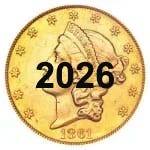This article was originally printed in Numismatic News.
>> Subscribe today!
Battle royale between former executive director of the American Numismatic Association, Colorado Attorney Christopher Cipoletti, and his former employer and client, the ANA, heats up with an eight-day trial starting Feb. 23.
ANA has listed some 24 potential or likely witnesses.
Cipoletti, acting through his lawyers, made an emergency application to the Colorado Supreme Court, asking that it stay the trial and hold the parties to another contractual bargain that they struck years ago when the ANA made its outside general counsel its in-house chief executive and lawyer: binding arbitration, though there was previously an arbitration that Cipoletti lost when he tried to collect a pension and other benefits from the ANA.
The litigation has taken on a life of its own, and each side now has said that the resolution of the controversy is likely to take far more than the eight days allocated for trial, and hundreds of thousands of dollars more – the net result of which is that there will likely be an appeal making the matter drag still onward.
Roots of the current litigation began more than six years ago when Cipoletti, then ANA’s executive director, began a lawsuit with the approval of the ANA board against John Nebel, ANA’s long-time outside information technology vendor, and Barbara (Suzy) Nulty, then head of ANA’s IT department.
From the inception of the suit in July, 2005, Cipoletti and the ANA were both represented by Janet Savage, a partner in Denver’s Davis, Graham law firm, which subsequently sued the ANA for failure to pay fees allegedly owed for representation.
As Savage explained in a court-filed document, she “undertook the representation of Plaintiffs [ANA and Cipoletti] pursuant to Colorado Rule of Professional Conduct 1.13(e), which ‘recognizes that a lawyer for an organization may also represent a principal officer or major shareholder.’”
Joint representation is not mandatory, but permissible if, under the circumstances, the positions are not incompatible. Cipoletti was not a shareholder in the ANA – it is a membership corporation– but was a principal officer.
On Aug. 12, 2007, a newly constituted ANA board of governors placed Cipoletti on “administrative leave” and published a press release concerning its actions.” Later that year he was fired “for cause” by the board. It settled the suit against Nebel.
The arbitrator ruled that Cipoletti breached his fiduciary duty to the organization, double-billed the ANA and private clients, and failed to properly account for his time, spending over 800 hours (the equivalent of 100 days) on non-ANA matters.
Cipoletti claimed he was entitled to a substantial pension contribution from the ANA; that he was entitled to the balance of his unpaid salary for the duration of his contract; and that he should receive reimbursement for various expenses incurred, but not yet paid over to him by the ANA.
The arbitrator, Colorado attorney Kathryn E. Miller, said that “On May 27, 2009, I issued an Order finding that the Claimant [Chris Cipoletti] has breached his fiduciary duties to the ANA. I found therefore that the Claimant was terminated for cause and is entitled to no further payments under his Employment Agreement. I dismissed the Claimant’s case in its entirety at that time.”
Cipoletti was the ANA’s outside general counsel and became executive director on the retirement of Edward C. Rochette in 2003. Under his agreement with the ANA board, he was permitted to continue to practice law with “several clients.”
Cipoletti’s firing set off a cavalcade of legal responses that eventually saw cross-claims filed by both sides against the other in a forum run by the American Arbitration Association in Colorado Springs, Colo., the home of both parties.
Nub of the complaint is summarized by the arbitrator: “Although he [Cipoletti] told the [ANA Board of Governors] that he was winding down his practice in the last half of 2002,” Cipoletti “continued his busy law practice in 2003 and 2004. Evidence acquired in discovery in this case reveals that he worked more than 8 hours a day in his private practice on at least 25 days between February and December, 2003, and billed more than 970 hours in his private practice that year.”
The arbitrator continues that “In 2004, [Cipoletti] worked more than 8 hours a day in his private practice at least 6 times, and billed approximately 560 hours that year. He represented more than 15 separate clients.”
A typical lawyer bills between 1,600 and 2,400 hours a year while in private practice. That means that Cipoletti would have been away from his job almost as much as he was at the ANA. Put another way, it represents over 120 days in a 250 day working year devoted to something other than a primary job that paid over $250,000 annually.
Decision in the arbitration put it in even more stark terms: “Claimant wanted it both ways and, as a fiduciary, he cannot have it both ways. For two years after starting his full-time position at the ANA, he worked more than part-time at his private practice. Billing 8 hours in a day requires working more than 8 hours. And there were many more days when he billed between 6 and 8 hours, which means that he was likely working 8 hours or more on that day in his private practice. It is simply not credible that when he was busy with his private practice, he could give his full attention to matters at the ANA.”
The arbitrator threw down the gauntlet with several specific findings:
Claimant [Cipoletti] failed to disclose to the BOG the scope of his private practice and the fact that he continued to engage in representing many clients long after beginning to work full-time for the ANA;
• Claimant failed to advise the BOG that he was out of the ANA office on non-ANA business a considerable number of days in the first two years of beginning his employment at the ANA;
• Claimant failed to accurately report his days away from the ANA offices as vacation hours, while at the same time he requested and received payment for 200 hours of accrued vacation in 2006, 166 hours more after his termination, and seeks additional hours through this process;
• Claimant intentionally double-billed expenses to more than one client, and personally accepted funds as reimbursement for those expenses when the ANA had paid for those expenses;
• Claimant intentionally and improperly billed for and received a fee for services paid by [another law firm] Barnes & Thornburg that belonged to the ANA, which he deposited into his personal funds.
Will eight days be enough to sort all of this out? We’ll see.
More Coin Collecting Resources:
• Subscribe to our Coin Price Guide, buy Coin Books & Coin Folders and join the NumisMaster VIP Program









